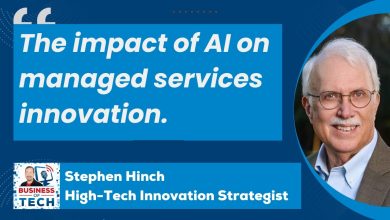Partner Ecosystems: Trends, Predictions & 2023 Forecast
Paul Bird interviews ecosystems guru Jay McBain to explore how the trend will evolve through 2023.
 In this Magentrix webinar the host Paul Bird interviews ecosystems guru Jay McBain to explore how the trend will evolve.
In this Magentrix webinar the host Paul Bird interviews ecosystems guru Jay McBain to explore how the trend will evolve.
Jay starts the talk by highlighting that channels are a huge part of our economies, with 75% of world trade going through retailers, resellers, distributors and dealerships.
Partner ecosystems are formed through the relationships that manage the many customer interactions with brands across marketplaces.
Misconceptions
At 3m:25s Paul asks what are the misconceptions about ecosystems. Jay replies by saying the primary one is that they are simply synonymous with channel.
He explains this by describing the emergence of the rise of the ‘Chief Partner Officer’. Previous the head of channel was a sales oriented function that reported into the CRO (Chief Revenue Officer), whereas now it’s a board role accountable for delivering activities and results such as co-innovation, network effects and technology alliances.
The overall trend accelerating this effect is how every company is becoming a technology company, from cars and bulldozers. For the first time in 30 years IBM didn’t win the patent race, purposely because they wanted to cultivate a culture of open innovation that generates IP through partner collaboration.
Co-innovation Challenges
Within the context of this evolution at 6m:05s Paul raises the point that not every one finds this new approach easy, some are finding challenges with a co-innovation mindset and culture, and asks Jay for some insights on how this might be tackled.
Jay replies by highlighting the shift from traditional business models to the new digital economy. Historically a new business had to go direct, building and selling their product, as no one would help them to do otherwise.
Now startups like SaaS businesses literally start from day one as partnering companies, building atop Cloud providers like AWS and Azure. So they’re in an ecosystem from day one, and there ability to work as part of this is key to their success.
Marketplaces
From 8m:55s Paul moves on the role of marketplaces, asking what role they will play within the ecosystem model.
Jay reports that trade through marketplaces will grow to $17 trillion by 2030, and he forecasts Cloud marketplaces will quickly reach £45 billion in just a couple of years, growing 85% per year, resulting in a sector broken down into reselling, marketplaces and direct sales accounting for a third each. Direct and resale will stay much the same in size, so all the new overall growth will come from the growth of marketplaces.
There is still the opportunity for partners to add value before and after transactions, but the marketplace will be the touch point that collects the customer’s money.
2023 Trends
At 12m:40s Paul asks what Jay believes will be the major trends in partner ecosystems that we’ll see in 2023, to which Jay responds by listing key developments including:
- People – As described above the evolution of ecosystems is driving an evolution in the role of partner executives, moving away from an emphasis on sales to one of facilitating successful marketplace collaborations. Partnering is no longer a department but a function across the entire organization.
- Vendor programs – Similarly vendors are transforming their channel structures and systems. Rather than recognizing success at the point of sale they will instead recognize value delivered across the ecosystem interactions.
- Technology – To support these new models there is a continuing expansion of investment and innovation of partnering applications and technologies, to the extent it’s growing to the same scale as the sales automation field. Especially so when you consider the size and complexity of tech ecosystems, for example AWS has over 120,000 partners and a million+ influencing the customer relationship.
Challenges and Leaders
From 24m:30s Paul asks about the challenges organizations could face building and managing their ecosystems in the coming year, and what exemplars stand out.
Jay describes the overall economic conditions putting a squeeze on channel investments but yet there is still a pressure to grow 10x, returning a focus to technology automation. The most successful channel leaders will be those who best combine people, program, process and automation.
He cites Microsoft as one leadership example, recounting how they adapted from the traditional world of Office and client-server to the Cloud era, and leveraged the channel to succeed at that transition, outgrowing AWS over the last 12 quarters. In many respects they are inferior to AWS but have proven more effective at utilizing an ecosystem approach.
Another keynote example is Hubspot, who came out of almost nowhere to become a $47 billion company, again due to their ecosystem strategy.
Advice
To wrap up at 34m:00s Paul asks what advice Jay would suggest for organizations to get the most out of their partner ecosystems.
Jay recommends a more grass roots rather than a big bang approach, like going to 20-30 small events rather than just one large one, a bottom up strategy that addresses the long tail where super connectors and other key shapers of an ecosystem can be found.



